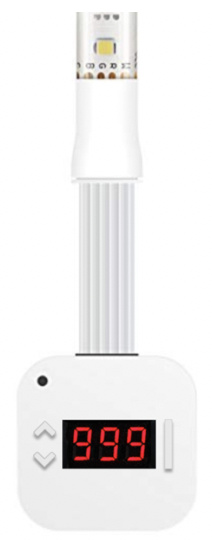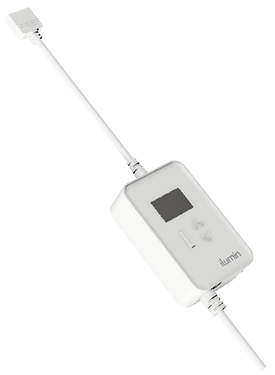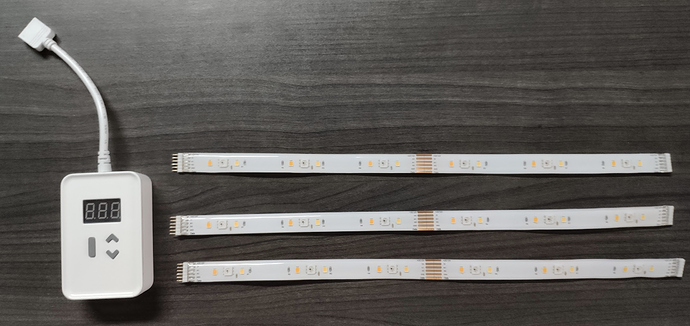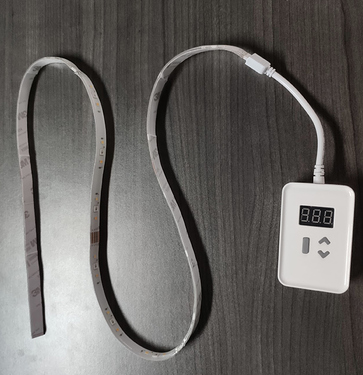Introduction
As mentioned in the 2019 Product Roadmap topic, this thread serves multiple purposes.
- Allows us to keep you updated on the project status (either good or bad)
- Allows you to participate and help us develop amazing products with you
- Enjoy each other’s company and have fun talking home automation
How this initial post will be laid out is in four sections:
- Project Overview
- Initial Hardware & Software Requirements (edited to remain up-to-date)
- Timeline (edited to remain up-to-date)
- Pinned Ideas & Shout-outs (edited to remain up-to-date)
Housekeeping
- DATES & FUNCTIONS ARE NOT SET IN STONE: Just a reminder that all dates and functions are sometimes fluid. We have to make choices based on feasibility, opportunity costs, and overall timeline. I will be as transparent as possible on these decisions, but just a heads up, they may not always be exciting.
- NO IDEA IS A BAD IDEA: Ok, some are, but honestly throw out anything that you can think of. If we use your idea, we’ll credit you and send you a free device, so take that shot!
- VERSION 1 VS VERSION 2: Some ideas may be fantastic, but may not make the cut for the first version of the product. Once the product is locked in from a function standpoint, we’ll keep a tally of V2 ideas and then once the product is produced, we’ll move the ideas over to the Suggestions & Wishlist section.
Ok, let’s get this party started!
Project Overview
The purpose of this project is to add a solid Z-Wave light strip the Inovelli repertoire and to offer it at an affordable price while solving two of the biggest problems light strips have… waste and 90 degree turns.
Waste: The waste problem is huge – imagine spending $60-80 on a smart lightstrip, having to cut the strip to size and throw out the part that was cut off (because once you cut the strip, it no longer works).
90 degree turns: If you’ve installed LED lightstrips in a spot that has a 90 degree turn, it’s hard to get that perfect fit.
The solution we have here is to create 1ft sections that easily push together – no more cutting, no more waste, easily add a 90 degree adaptor = amazing.
Project Name - Cribs
I was running out of project names and quite frankly got lazy with this one. Back in the day there was a show called MTV Cribs where celebrities would show off their house and I thought that after these LED strips were installed, you all would want to show off your house to your friends MTV Cribs style.
Cribs - Hardware Requirements
Here are the initial hardware asks we came up with. Pretty decent start!
Hardware - RGB Lightstrip (Look / Feel)
We’ll be using our manufacturer’s house light strip. Good news is that they specialize in lighting and it’s actually what they started out doing before adding in the IOT department.
Here’s a quick video that shows the look of the strips they offer – we would be taking the addressable one on the right: https://youtu.be/Hpnv0bOcMck
PS – Don’t mind us nerds getting all amped up over an LED strip haha! That’s @anon14959390 and I in the video and we sent it to Eric M since he’s a nut when it comes to LED’s.
Using their LED strip, we would provide the strips in 1ft increments that plug into one another easily. The intro pack would be 6ft (six strips) which is similar to what other companies offer in length.
Hardware - RGB Z-Wave Controller
- Digital LED Display for Configuration: this serves two purposes – 1) It will allow you to configure the parameters from the LED strip itself and 2) For addressable LED’s, it will let the HUB know how many LED’s are in your setup even if you add sections
- Example: If each 1ft strip has 20 LED’s, you would enter in the number of strips in your setup and the HUB will automatically calculate the number of LED’s in your setup. This is important because if you want to have cool effects, the HUB needs to know how many individual LED’s are in the strip.
- Config Button: The configuration button will match that of our switches. It allows you to enter configuration mode directly from the LED strip itself (instead of having to install a device handler, driver or any other code)
- Up/Down Arrows: These will also allow you to easily toggle through the parameters and settings for configuration
Here’s the mockup:

Hardware - Connectors
We’d like to include some connectors in the package to help with 90 degree turns, T-turns, etc. At the minimum there will be 90 degree pieces. Here’s what we’re tossing around:
- 08/16/19 – We decided to sell these separately to keep the MSRP down for you as they were adding a significant cost to the base price. We’re still moving forward with tooling here, but unfortunately, we’ll have to sell them separately.

Hardware - Features & Capabilities
- Power Monitoring: Should measure power consumption for
both light and fan separatelywhoops, I meant for the LED strip (thanks @ccmcgeek)
- Z-Wave Distance Estimator: LED lights will light up red if not in range, or green if in range
- 700 Series Chip: Oh yeah… going to be epic
Cribs - Software Requirements
Below is what we came up with for the software requirements. It’s going to be one amazing LED strip!
- Power restore options: When power is restored, the user can choose what state it returns to (ie: Off, On to % Level, On to RGB Level, Last State prior to power outage)
- Ramp rate: user can choose how fast/slow their strip dims on/off
- Minimum Dim Level: minimum level the strip can be dimmed
- Maximum Dim Level: maximum level the strip can be dimmed
- Default Level: sets the default dim level the strip goes to when turned on manually or remotely
- Default Color Level: sets default color level when strip is turned on remotely
- Z-Wave Signal Strength Checker: Flashes and/or dims a certain amount of time to signal Z-Wave Strength (could also be: Warm Kelvin = Poor Signal, Cold Kelvin = Good Signal)
- Z-Wave Notifications: Notifications like our switches (ie: Door is opened, maybe light can flash)
- Auto On/Off: strip can turn off after a certain amount of time
- RF Protection: block someone from turning it off remotely
- Easy Factory Reset: strip should be easily factory reset
Timeline
Ah, everyone’s favorite part. When is this flippin thing going to be released? Great question – here’s the high-level of what happens leading up to the first release of the timeline:
- We present a PRD (Project Request Document) that has all of the above info in it
- R&D (manufacturer) analyzes the PRD and we go back and forth until we can align on 90% of the product
- Initial Timeline is released and remaining 10% of product features are added/cut along the way
Again, just want to throw this out there – I don’t have a crystal ball so I can’t predict things that come up along the way. Trust me when I say we’re trying our best to get things launched on time.
Pre-Initial Timeline Milestones:
- Present PRD: Completed 07/09
- R&D Analyzation: Completed 07/23
- Initial Timeline Released: Completed 07/31
Timeline (Estimated)
The initial timeline will be shown below and will be updated weekly (if needed).
- Design Phase: Completed (est. completion date is 09/23)
- 09/05/19: 3D Renderings are completed for the controller – check it out here
- Tooling: Completed (est. completion date is 09/30)
- Firmware Development: In Progress (est. completion date is
09/3011/08)- 08/09/19: Est. completion date is now 10/18 due to one of their firmware engineers quitting (they’ve hired a new one, but it will take some time for him to learn the 700 Series SDK).
- 10/10/19: Est. completion date is now 11/08, however, it could be sooner. Since they’ve created LED strips before, we were able to save time on UL Certification, so net… we are still on track for late December launch
- EVT Phase: Completed (est. completion date is 09/19)
- Reliability Test: Completed (est. completion date is 10/01)
- Certifications: Not Started (est. completion date is
11/1512/02)- Z-Wave Certification (Technical): Not Started
- Z-Wave Certification (Marketing): Not Started
- FCC Certification: Not Started
- IC Certification: Not Started
- UL Certification: Completed
- Mass Production: Not Started (
est. completion date is 12/01)- 08/09/19: Est. completion date is now 12/14 due to the firmware being pushed back
- Arrival on Amazon, Inovelli.com, etc: Not started (
est. completion 12/08)- 08/09/19: Est. completion date is now 12/21 due to the firmware being pushed back
Pinned Ideas & Shout-Outs
Here are the ideas from the community. We sincerely appreciate them, we love them, and we couldn’t create the products we do without them. So, thank you for your input and let’s continue to innovate together and change the home automation category for the better (NOTE: if an idea is crossed out, it’s not because it wasn’t valid, nor was it something we didn’t consider – we’ve discussed it internally or with the manufacturer and unfortunately it was not feasible).
Hardware
-
Cut Strip Option at the 6" mark: We’ve asked them to add a cut mark at the 6" mark for a more accurate and customizable installation. Please note that after you cut off the 6", that portion will no longer be able to be used.- UPDATE 10/03/19: We had to nix this idea because if you cut the strip at all, it will lose the addressable functionality (the controller won’t know how many LED’s there are). Instead, we will provide 2x 6" strips (in lieu of 1x 1’ section). So there will be 5x 1’ LED strips and 2x 6" LED strips
-
Possibly a microphone jack to have the lights change to sound
-
Software
Weekly Recap
Every Wednesday, we have a meeting with our manufacturer to go over the various projects (status, issues, timeline, etc) and below I’ll provide a recap as well as edit the sections above so we can all keep track. If you have any specific questions you’d like me to ask, feel free to tag me and let me know so I can ask them as well. The weekly cadence for updates will be Thursday mornings.
August 7, 2019: everything above is the latest news. I’ll have a call later today with them and update everyone tomorrow.
August 9, 2019: the project got moved back a couple weeks due to a firmware engineer quitting on their team. While they’ve found a new engineer, it will take some time to get him familiar with Z-Wave’s new 700 Series SDK. In addition, they’ve confirmed that they will be using a 12V/2A Power Adaptor and while they haven’t tested this, they have said the maximum length could be up to 30-32ft (10m). However the lumens would drop after about the 8ft mark (260lm/ft). They’ve also confirmed they can add a cut mark at the 6" mark of each piece for a more accurate and customizable installation.
August 16, 2019: the big discussion this week was around pricing and how to keep this affordable for everyone. The major cost drivers in this project are the connections (the 90 degree connectors, T-connectors, and strip connectors), the connectors for each 1ft section, and the controller. In order to keep costs reasonable, we removed the included connections (90, T, strip Connectors) from the package and they can be purchased separately. Our thought process was that not everyone would use them and we’d rather keep the MSRP reasonable.
August 22, 2019: so @anon14959390 and @Brianna_Inovelli worked their magic and managed to get tunable white bulbs included in the lightstrip. I was impressed before with the white, but now there’s dedicated bulbs just in case (I do wear glasses after all). The project is still on track for a Christmas release.
September 05, 2019: Everything is on track for a late December release and we got 3D Renderings of the controller, which looks awesome!
September 12, 2019: Still on track for a late December release – no real updates this week. No news = good news!
October 3, 2019: I forgot to update everyone last week. Sorry about that! This week the project manager was on vacation, so I didn’t have an update. However, here’s an update from the week before. This project is still on track for late December, which is great news. We also had to make a decision to not have the strips be cuttable at the 6" mark. The reason is that if you cut the strips, then it’s hard for the controller to know how many addressable LED’s are on the strip. So, what we decided was to offer 5x one foot (1’) sections + 2x six inch (6") sections (still a total of six feet).
We also got non-working samples to approve the look/feel, which are shown below (please note: the # of LED’s on the strip are not correct. We asked for more, so I’m not sure what’s going on there, but when the PM is back from vacation, we’ll ask. In addition, these were sent prior to when we made the decision to not have the cut marks at the 6" mark, so please disregard those):
October 10, 2019: Project firmware development has been kicked off and we’re still on track for a late December release!
January 8, 2020: Crap guys, I dropped the ball here in updating this project. We had to put it on hold due to expected tariffs of 30%. However, we just found out that this may have been put on hold and/or production is moving to Taiwan.
The good news is that hardware is complete and firmware is probably 90% complete. We do have it displayed at CES as well.
More to come on timelines!
March 14, 2020: Unfortunately, we’ve had to put this project on hold due to tariffs being at approximately 30%, which puts our MSRP way higher than we want to be. We’re in a good spot from a firmware and hardware POV, but unfortunately couldn’t go to Mass Production due to tariffs.
September 08, 2020: We’re back in business. Tariffs have been lifted (although they will start up in 2021) for now and we received better pricing. More to come as details emerge, but we should have these launched before Christmas. Currently, we are reaching out to beta testers.
January 06, 2020: Lightstrips have arrived – thank you all who have supported this project!







